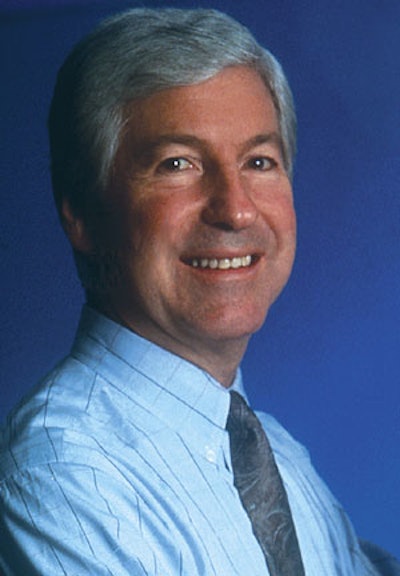Judging by the energy and hours they put in, you wouldn’t know that Richard Gerstman and Herbert Meyers were “semi-retired.” In 1970, the two founded Gerstman+Meyers (now Interbrand), a brand identity and design consultancy. Earlier this year their book, The Visionary Package, was published (see packworld.com/go/c150).
So when this editor asked them to address the challenges of healthcare package design, it was no surprise to get their immediate response in a Saturday morning e-mail. The topic, said Meyers, “hit a soft spot with me. At Gerstman+Meyers, we serviced numerous major clients, among them Bristol-Myers, Burroughs Wellcome, Johnson & Johnson, Schering, Squibb, Warner-Lambert, Searle, Pfizer, SmithKline Beecham, and more.”
Gerstman says, “The growth of the healthcare market offers many challenges to the package designer. The key to creating a good nutraceutical package means representing your brand and your product and breaking through the clutter of those retail channels.” He offers the following packaging tips from The Visionary Package, which can be applied to most packages, including nutraceuticals and drugs:
• Know your competition. Study the market in various shelf situations and stores so that your future package will not disappear on the crowded shelf.
• Understand the product’s user and develop a strategy for a brand personality that connects with that user and represents the essence of the brand. Establish your product point on a scale, which may range from “good taste” at one end through “medicinal” on the other. This is most important because your package design reflects what the outside world thinks of your brand and your product.
• Consider a unique package shape. Don’t settle for an easy answer. Perhaps a unique bottle shape or a modular carton configuration could make the packaging more effective.
• The brand identity should be recognizable and memorable. Look for a unique name, logo, and color scheme. These elements, along with the styling of the logo, will communicate the brand personality. It can communicate strength, a fast-working product, a mild product, etc.
• Graphics should be simple and informative. Packages are small, so make the product understandable with as little copy as possible in order to keep it uncluttered. Avoid ancillary elements on the front of the package that are unnecessary.
• Use graphics to reflect your price and value strategy.
• Do not overpackage. If you can use a primary package without any overwrap, you save money and contribute to a better environment.
Well-designed packages
So what healthcare packages on the market impress Gerstman and Meyers? “For several reasons, one of my favorite packages is Procter & Gamble’s Prilosec OTC [over the counter],” says Gerstman (Photo A). His reasoning is as follows:
• The color scheme is unique. The purple background, with touches of cool blue and warm red, separate it from other products in its category.
• Brand identification through the large, white logo makes it easy to find.
• Minimal copy elements keep the package uncluttered.
• The cartons, using one, two, or three 14-day packs, are functional for retail selling, as well as for manufacturing.
Meyers cites two new packs for McNeil-PPC, Inc.’s Tylenol Arthritis Pain Relief (Photo B) and Target’s prescription package (Photo C). “The Target package design represents a development that I find absolutely brilliant,” he states. “It solves much of what has been ignored by most drug manufacturers and prescription services. It provides a large area for medical information and, by adding color bands, helps to differentiate prescriptions in households that have several prescription drug users. I wish more companies would have the courage and foresight to utilize this or similar solutions.”
He applauds the Tylenol bottle “that features an easy-to-open cap with large ‘serrations.’ This makes it much easier for arthritis sufferers to open and close the bottle. McNeil and other pharmaceutical companies should use this type of cap on all their bottles because many of their products are used by elderly consumers. You don’t need to be an arthritis sufferer to enjoy this feature.”
The ongoing open/close battle
Meeting senior-friendly and child-resistant objectives continues to challenge healthcare manufacturers. “Nothing ignites the scorn of the elderly more than their difficulties with tamper-evident and childproof packaging,” says Meyers. “Serious conflicts crop up between closures that are meant to protect children from harm and closures that are geared to the needs of the elderly. As many bottle closures call for pressing down hard or lining up elusive and often hard-to-see arrows, this makes many closures simultaneously childproof and elderly resistant.”
Says Gerstman, “Since seniors are a large part of the healthcare market, there is a challenge to meeting their needs. Lining up arrows that are hard to see, squeezing bottle caps that are difficult for weak fingers or arthritic hands, [and dealing with] heavy-torque caps and flip-tops requiring major dexterity all make it difficult for seniors to open packages. Child-resistant protocols should meet the challenge so that seniors can interact well with their packaging.”
Another challenge is that “vision may be impaired in older folks, and larger type should often be used. Good copywriting can keep a package informative, but not superfluous,” Gerstman believes.
See sidebar to this article: Type tips for healthcare package design
See sidebar to this article: Three healthcare packaging shortcomings
























